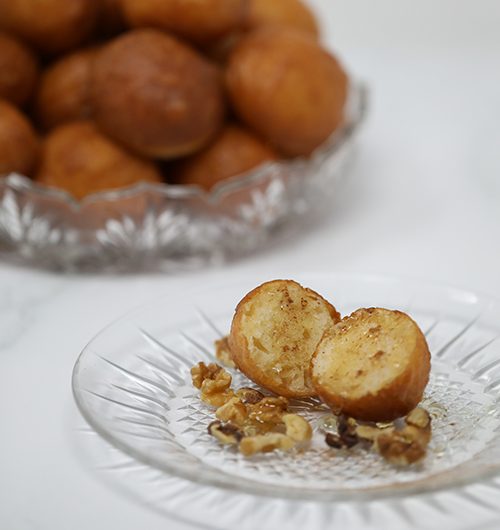
ABOUT THE ART
Martini, Simone. Saint Andrew. 1326. Tempera on wood, gold ground. 22 1/2 x 14 7/8 in. (57.2 x 37.8 cm). Gift of George Blumenthal, 1941. New York City, New York. The Metropolitan Museum of Art.
This panel is from an important five-part portable altarpiece that was possibly commissioned by the governing body of the city of Siena. Together with Giotto, Simone was the most famous artist of his day. His refined technique and descriptive powers, evident in the expression of Saint Andrew and the manner in which he holds his book, were unequalled in Europe and earned the praise and friendship of the poet Petrarch (1304–1374).
Description by The Metropolitan Museum of Art.
St. Andrew the Apostle – November 30th
St. Andrew was one of Jesus’ first disciples. In fact, the Eastern Church considered him the first-called (Protokletos). Like his brother Simon Peter, he was a fisherman in Galilee. After the Resurrection, he went out to spread the Gospel, mostly in Greece. Tradition says that he became the first Bishop of Constantinople, making it a center of church leadership. He was martyred in Greece and infamously hung on an X-shaped cross. His relics are thought to be in many places, including St. Andrew’s Scotland, where he became the patron saint of that country, and his X-shaped cross was placed on their flag. He is thought to have preached in many Eastern European countries, including Cyprus, Romania, Ukraine, and even Georgia.
To celebrate, we are having loukoumades. Loukoumades are the Greek version of donuts, which are deep-fried to a golden perfection. They are traditionally served soaked in hot honey syrup, sprinkled with cinnamon, and garnished with chopped walnuts. On St. Andrew’s Day (November 30), Greek women customarily prepare loukoumades and offer them to the church. However, you’ll probably just want to keep them for yourself. They are delicious.

Loukoumades
Loukoumades are the Greek version of donuts, which are deep fried to a golden perfection. They are traditionally served soaked in hot honey syrup, sprinkled with cinnamon, and garnished with chopped walnuts.
Keep the screen of your device on
Ingredients (this recipe requires A scale)
1 cup of water, room temperature
1 cup of milk, room temperature
15 g active dry yeast
3 and 1/4 cup all-purpose flour
2 tablespoons sugar
1 teaspoon salt
4 tablespoons olive oil
vegetable oil, for frying
- To garnish
Honey
Cinnamon
Walnuts, chopped
Directions
- In a bowl add the water, sugar and yeast. Stir with a whisk until the yeast dissolves completely. Let rest for 5 minutes.
- In the bowl of a stand mixer with whisk attachment, add the yeast mixture and the rest of the ingredients for the dough. Whisk at high speed for about 2 minutes or until the mixture becomes a smooth batter.
- Cover the bowl with some plastic wrap and let the dough rest in a warm place for at least 1 hour.
- In a deep pot, pour enough vegetable oil to deep fry the loukoumades. Heat the oil using medium heat until hot. Once the temperature of the oil is around 320°F you are ready to fry the donuts.
- Place the dough in a large piping bag fitted with a large, round nozzle. Dip a tablespoon in some oil, then pipe a spoonful of the dough unto the spoon. Gently place the spoonful in the hot oil. Repeat this process allowing enough space between the dough balls so that they don't stick together.
- All the donuts to brown on one side then rotate them over. Remove once they are crisp and golden brown on all sides.
- Place them on a plate lined with paper towels to remove excess oil.